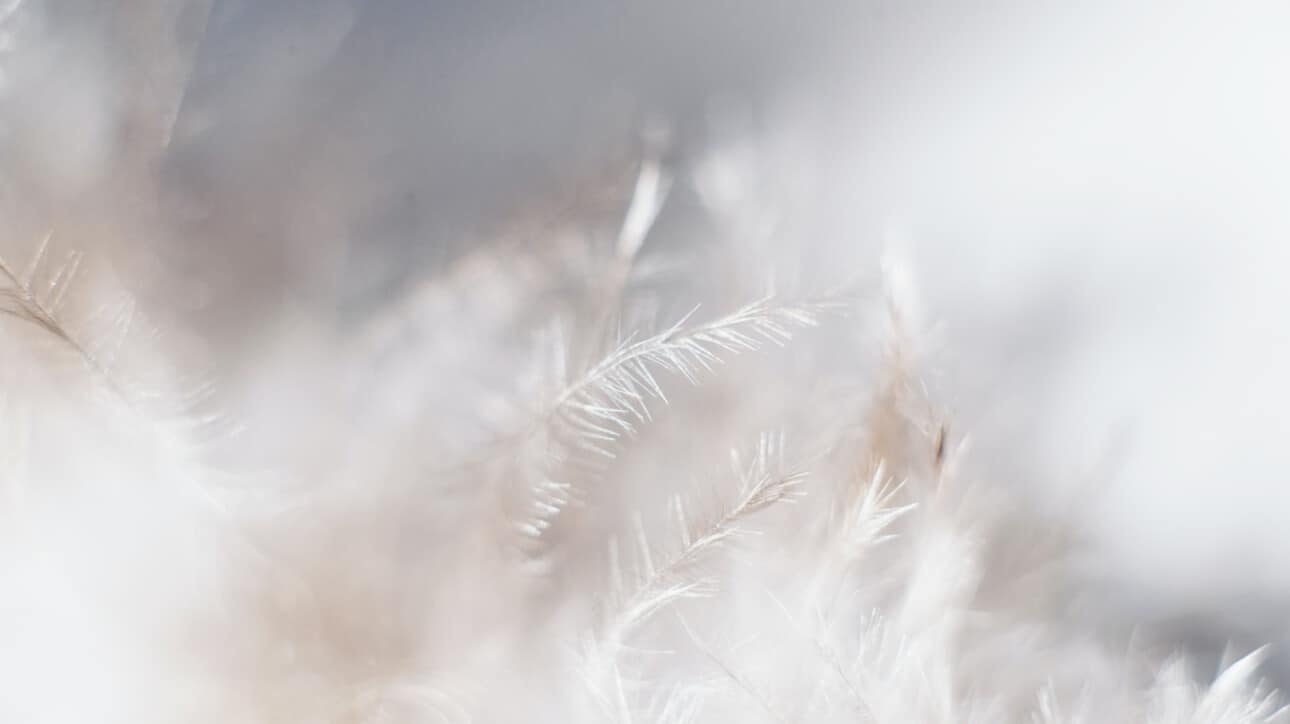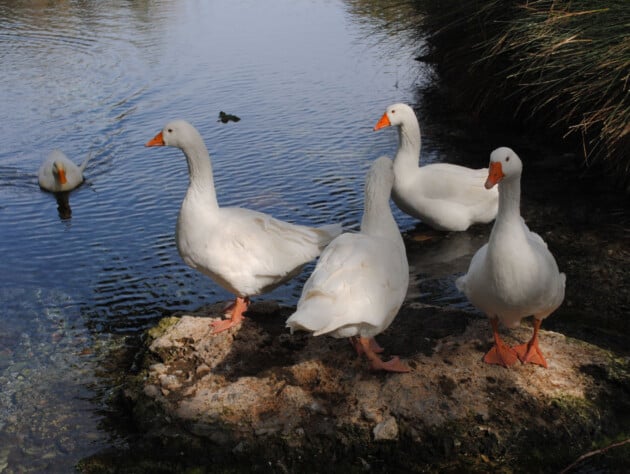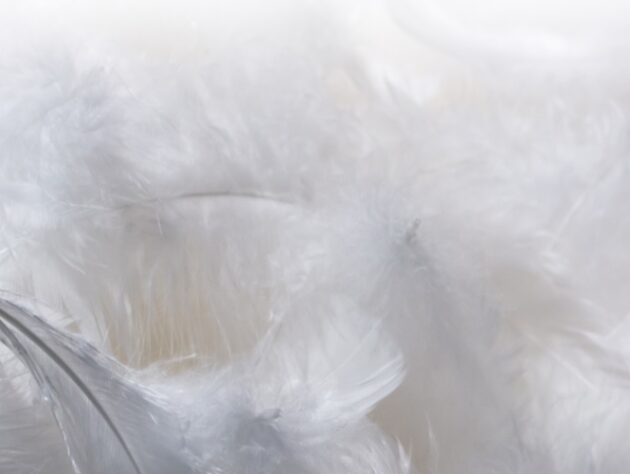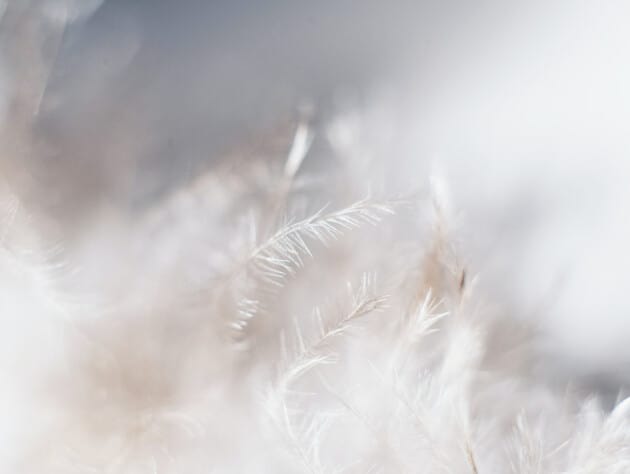Down is an insulating material with a high warmth-to-weight ratio.

About
Down is the layer of fine feathers found under tougher exterior feathers, usually obtained from the breast area of geese and ducks. It’s extremely light, compressible, breathable, vapor permeable, and durable. It can also expand after having been stored or compressed. The quality of down is measured by fill rating or loft, and this is expressed in terms of the volume that one ounce of down occupies. Fluffier down has higher loft.
Challenges
There are concerns about animal welfare in down production.
Being both biodegradable and recyclable, down poses few environmental risks. However, there are concerns about the standard of animal welfare in the production of down. Down is often described as a by-product of waterfowl raised for meat, but animal rights groups have shown that some suppliers engage in live plucking in order to harvest more down from a single bird. There are also worries that down feathers can be taken from birds that have been force-fed to make foie gras.

Solutions
We’re pushing for higher animal welfare standards across the industry.
Brands should commit to source virgin down from certified sources and explore the potential for recycled down. It isn’t usually possible to track recycled down back to its source, so there’s little visibility on animal welfare going back to production. But brands can reduce emissions, and so recycling is important. It’s also an effective way to increase the lifespan of a material and it contributes to circularity.

TAKE ACTION
Source certified virgin down and explore the potential for recycled
Work with your suppliers
As the main procurers of the raw material, down and feather suppliers have a key role to play in connecting the farm to the textile industry’s value chain. Companies can get to know all their suppliers and work with them to understand more about the farms and ensure personnel in all parts of their business are trained and motivated to put in place robust animal welfare policies and chain of custody criteria.

Identify regional risks
The risks associated with down production vary by region. It’s therefore useful for companies to map out their supply chains and identify any high-risk areas. Sourcing certified down such as RDS-certified down or Downpass ensures that farms have been kept to standards that prohibit force-feeding, live plucking, and other welfare risks.

Commit to certification and continuous improvement
Growing public and industry awareness of practices like live-plucking and force-feeding has pushed brands to move quickly to replace conventional down with preferred options. Leading companies are making long-term commitments with certified down suppliers in addition to this, and working towards continuous improvement. Even when a company is already using preferred down variations, there is often room to do better—for example, by developing a diverse portfolio of certified virgin and recycled down.

RDS
Our industry standard for down
Several years ago we pioneered the Responsible Down Standard (RDS) in collaboration with The North Face. It aims to make sure that down and feathers come from animals that have not been subjected to unnecessary harm. Education, through the RDS and other means, will encourage organizations to adopt progressive animal welfare practices. The standard also gives companies and consumers a way to know what’s in the products they buy.

MATERIALS PRODUCTION DASHBOARD
Get the latest data
You can access our latest data on production volume for down in our Materials Production Dashboard.
